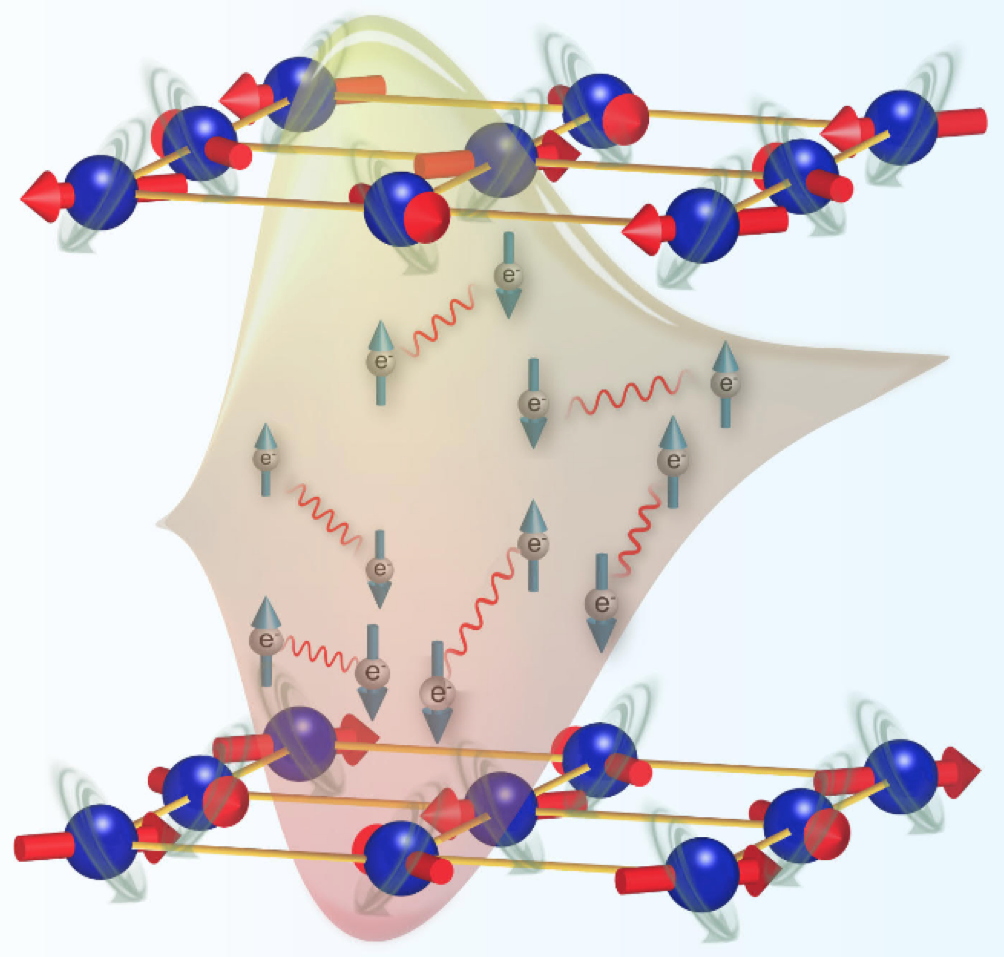In a classical superconductor, as in some metals, the current flows without resistance at very low temperatures (< 20 K) thanks to the electrons that form pairs (called Cooper pairs). Unfortunately, the complicated and therefore costly conditions for maintaining such extreme temperatures are a barrier to exploiting the advantages of superconductivity in everyday life. In the 1990s, new superconducting materials with higher temperatures (up to 135 K) were discovered. In these compounds, it is assumed that the Cooper pairs are formed by magnetism. However, the exact mechanism is not yet understood. Recently, iron-nickel-arsenic compounds, superconductors around 50K, have opened perspectives for the understanding of this mechanism. However, fundamental studies on these materials are complicated because few probes can see the current-carrying electrons interact with the
magnetic moments of the atoms.
It is in this context that researchers at IRIG [
collaboration] are conducting experiments on the iron-nickel-arsenic
pnicture in order to study the dynamics of the electron spins responsible for the superconductivity effect. They have selected CaK(Fe
1-xNi
x)
4As
4, a new material composed of an iron-nickel arsenide layer that alternately separates a calcium layer and a potassium layer. The structure of this compound is particularly interesting because the iron atoms form square patterns, with the magnetic moments of the iron atoms pointing to their centers (Figure). This arrangement of the iron's magnetic moments plays an essential role in the superconducting effect.
Thanks to the neutron flux generated by the Very Large Facility at the Institut Laue Langevin in Grenoble and the instruments operated by IRIG in this facility , these researchers were able to probe the compound at the atomic scale. They were thus able to highlight the origin of the coupling of the electron spins with the magnetic moments of the iron atoms: the coupling causes an agitation of the spins which pair up to form the superconducting state and which are preferentially oriented in a direction perpendicular to the iron-nickel-arsenic layers.
These new experiments confirm the theories to interpret the phenomenon of superconductivity: when the material cools down to the critical temperature (for which the material becomes superconducting), the spin agitation induces the itinerant electrons to pair up which favors the establishment of superconductivity. These results could lead to the proposal of a common mechanism for all superconducting materials.

Schematic of the iron-nickel-arsenic compound.
The square lattice of iron atoms (blue balls) and their magnetic moments (red arrows) form horizontal layers. Perpendicularly, the electron spin agitation (e
-) accentuates their pair formation to favor the superconducting state at higher temperature.
Credit: Huiqian Luo team/Institute of Physics, Chinese Academy of Sciences.
Pnicture: chemical compound formed with an element of the pnictogen family, i.e. the atoms of the fifteenth column of the Mendeleev table (nitrogen N, phosphorus P, arsenic As, antimony Sb, bismuth Bi).
Magnetic moment, spin: internal degree of freedom of electrons and atoms which is at the origin of magnetism in particular. They are visualized by arrows.
Collaboration: Chinese Academy of Sciences, Léon Brillouin Laboratory.